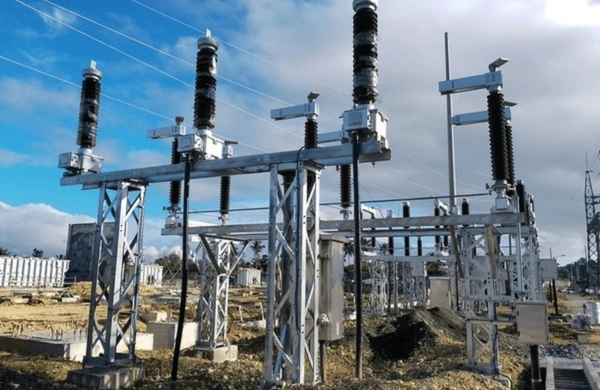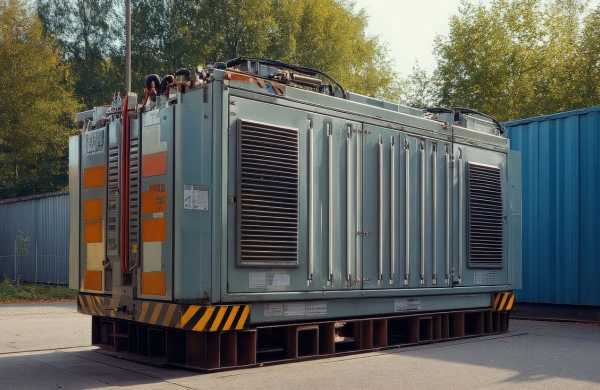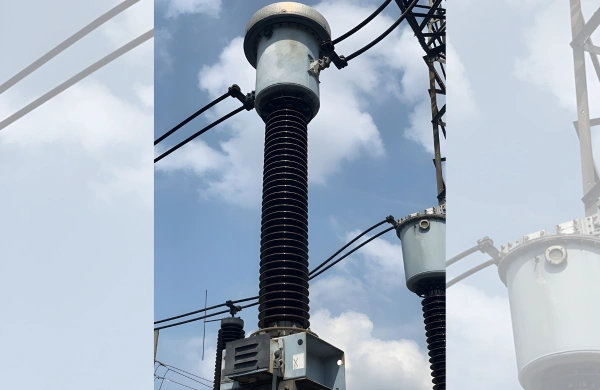Introduction
In high-voltage power systems, constant voltage transformers (CVTs) — also known as capacitor voltage transformers — play a crucial role in providing reliable voltage scaling, isolation, and signal conditioning for metering and protection. Designed for high-accuracy voltage measurement and power line carrier communication (PLCC), CVTs ensure grid stability by converting high transmission voltages into manageable, standardized values for monitoring and control.
Know About CVT Transformers Delivering Stable Voltage for Power Transmission
Zetwerk manufactures precision-engineered CVT transformers that combine robust insulation systems, reliable dielectric design, and stable performance across varying grid conditions. Built to international standards and tested under simulated field environments, Zetwerk’s CVTs are trusted in substations, transmission networks, and industrial power installations across North America and global markets.
1. The Role of CVT Transformers in Power Transmission
A CVT (Capacitor Voltage Transformer) steps down high system voltages — typically 66 kV to 400 kV — to standard secondary values (110 V or 120 V) suitable for measurement and relay operation. Unlike potential transformers (PTs), CVTs employ a capacitive voltage divider coupled with a tuning reactor and electromagnetic transformer to achieve compact design and cost efficiency at extra high voltage levels.
Key functions include:
- Voltage measurement for protection relays and meters.
- Isolation between high-voltage lines and low-voltage control systems.
- Carrier signal coupling for power line carrier communication (PLCC).
- Overvoltage protection and system monitoring.
By combining voltage scaling and signal coupling in one device, CVTs minimize system complexity while maintaining high accuracy and dielectric reliability.
2. Working Principle and Design Overview
A CVT’s operation relies on capacitive division and electromagnetic transformation.
Main components:
- Capacitor stack: Two or more series-connected capacitors form a divider across the high-voltage line, proportionally reducing the line potential.
- Intermediate transformer: Steps the reduced voltage down further to standard output values.
- Tuning reactor: Compensates phase angle and frequency variations to maintain output stability.
- Damping and protection circuits: Protect against transients, switching surges, and resonance.
The design ensures accurate voltage reproduction under both steady-state and transient conditions. Zetwerk’s CVTs are precisely tuned to maintain consistent performance across a wide frequency spectrum, ensuring minimal phase shift and ratio error.
3. Construction and Material Design Excellence
Zetwerk’s CVT transformers are designed for long-term outdoor operation in diverse climates. Their construction emphasizes electrical strength, mechanical rigidity, and insulation reliability.
Key construction elements include:
- Porcelain or polymer insulators: With creepage distances optimized for pollution levels and environmental conditions.
- Capacitor elements: Manufactured using high-dielectric polypropylene film and aluminum foil electrodes for low dissipation factor and high impulse strength.
- Intermediate transformers: Built with grain-oriented silicon steel cores and vacuum-impregnated windings for low losses.
- Sealed enclosures: Filled with dry nitrogen or oil to prevent moisture ingress.
- Base and terminal structure: Designed for high mechanical strength, ensuring vibration resistance during transport and operation.
Each unit is hermetically sealed and equipped with pressure relief valves, temperature monitors, and grounding terminals to guarantee safe and reliable performance in high-voltage environments.
4. Performance Characteristics and Testing Standards
Performance reliability of CVTs is determined by their ratio accuracy, phase displacement, and transient response. Zetwerk designs its CVTs to comply with IEC 61869-3, IEEE C57.13, and ANSI standards for voltage transformers.
Typical performance features:
- Accuracy class: 0.2, 0.5, or 1.0 for metering; 3P or 6P for protection.
- Voltage range: 66 kV to 400 kV and above.
- Frequency range: 50 Hz and 60 Hz.
- Thermal class: Up to 120°C with Class F insulation.
- Partial discharge levels: <10 pC under rated conditions.
Each CVT undergoes routine, type, and special tests including:
- Power frequency withstand and impulse voltage testing.
- Capacitance and tan delta (dissipation factor) measurement.
- Ratio and phase angle calibration.
- Partial discharge and ferroresonance performance evaluation.
These rigorous tests validate electrical performance, dielectric strength, and long-term reliability under service conditions.
5. Manufacturing Precision and Quality Assurance
Zetwerk’s manufacturing facilities are equipped with advanced coil winding, capacitor assembly, and high-voltage testing infrastructure to ensure accuracy and consistency across production batches.
Manufacturing highlights:
- Automated capacitor winding and layering machines for uniform capacitance.
- Vacuum drying chambers to eliminate moisture from dielectric materials.
- High-voltage impulse test laboratories for type and special test validation.
- Helium leak detection systems ensuring perfect sealing integrity.
- Dynamic test benches for ferroresonance and transient stability verification.
Zetwerk’s CVTs are manufactured under ISO 9001 and ISO 14001 certified processes, ensuring environmental compliance and quality consistency. Each product is supplied with a complete test certificate, QA documentation, and design verification record.\
6. Application Areas of CVT Transformers
Zetwerk’s CVT transformers serve a wide spectrum of high-voltage and industrial applications.
Common use cases include:
- Transmission and distribution substations: Voltage measurement and isolation.
- Grid interconnection points: Metering and protection between multiple voltage levels.
- Power plants: Integration with control and relay systems.
- Renewable energy substations: Supporting inverter-grid synchronization and monitoring.
- Industrial switchyards: Reliable measurement and coupling for high-voltage feeders.
In addition to standard designs, Zetwerk offers customized CVTs for harmonic environments, dual-frequency systems, and regions with high pollution or seismic activity.
7. Safety, Reliability, and Environmental Considerations
Safety and durability are at the core of every Zetwerk CVT design. Key features include:
- Creepage and clearance optimization for pollution resistance.
- Corona-free design to minimize partial discharge at high voltages.
- Overpressure relief and arc-safe construction.
- Anti-ferroresonance damping circuits for grid stability.
- Non-toxic insulating oils and eco-safe materials.
All outdoor CVTs are tested for UV resistance, thermal cycling, vibration, and seismic endurance, ensuring uninterrupted service life exceeding 25 years under real-world operating conditions.
8. Zetwerk’s Engineering Capabilities for CVTs
Zetwerk combines advanced electromagnetic modeling, high-voltage testing infrastructure, and process automation to ensure manufacturing precision at every stage.
Key capabilities include:
- Design and simulation using FEM and EMF analysis tools.
- In-house fabrication of capacitor stacks and transformer cores.
- High-voltage test capability up to 1,200 kV impulse level.
- Custom voltage and accuracy class configuration.
- Global logistics and packaging compliant with ANSI/IEEE and CSA standards.
By maintaining full control over design, materials, and testing, Zetwerk ensures predictable performance, low loss, and high operational safety in every CVT delivered.
Conclusion
As power networks evolve toward higher efficiency, smarter protection, and renewable integration, the demand for accurate, reliable CVT transformers continues to grow. These units are critical for safe voltage monitoring, insulation coordination, and grid communication.
With complete control over design, coil manufacturing, and capacitor assembly, Zetwerk supports North American utilities, EPCs, and industrial operators seeking dependable high-voltage transformer solutions built for long-term service and minimal maintenance.
FAQs
a. A Capacitor Voltage Transformer (CVT) steps down high voltages using a capacitive divider and transformer combination for metering and protection.
a. They are designed for 66 kV to 400 kV systems, customizable for higher voltage ratings.
a. All CVTs meet IEC 61869-3, IEEE C57.13, and ANSI testing and design standards.
a. Through vacuum drying, impulse testing, partial discharge checks, and sealed nitrogen enclosures.
a. Yes, Zetwerk engineers design custom units for varying voltage classes, frequencies, and environmental conditions.









